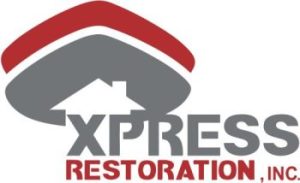Menu
Urgent Steps for Managing Water Damage Effectively
Have you faced unexpected waterdamagein your property? Addressing it swiftly is essential to prevent further issues. This guide covers identifying the source of moisture, efficient water extractionmethods, and the key steps in the water restoration process. Additionally, we discuss the importance of constructionpractices and maintaining ductsystems to avoid future problems. By following these urgent steps, you can effectively manage waterdamageand protect your home or business.
Identify the Source of WaterDamageQuickly and Accurately
Identifying the source of waterdamagepromptly ensures effective water removal. Inspect pipes, roof, and windows for leaks, and check sumppumps and appliances like dishwashers for malfunctions.
Monitor high humiditylevels and look for signs of past waterissues in walls or woodfurniture. Delaying action can lead to extensive damage and costly repairs. For assistance, provide your email addressto connect with experts.

Quick Tip: Contact Your Insurance Agent for Guidance
GET YOUR FREE ASSESSMENT
Call Now for Immediate Fire Damage Assessment
and Repair.
Inspect for Leaks in Pipes, Roof, and Windows
During a water damage emergency, thoroughly examining pipes, roof structures, and window seals is essential to locate the breach. Inspecting the crawl spacecan also reveal hidden leaks that contribute to ongoing issues. Prompt identification of these sources facilitates swift property damage restorationefforts.
Ensuring effective drainagearound the propertyhelps minimize wateraccumulation and supports the dryingprocess. Addressing these factors quickly prevents moldgrowth and structural weaknesses, safeguarding the integrity of the home and reducing the need for extensive repairs.
Check for Sump PumpMalfunctions or Flooding
Regularly inspecting the sump pumpensures your propertyremains protected against unexpected watersurges. A malfunctioning sump pumpcan lead to a flooded home, causing extensive damage that may require immediate water restorationservices.
Homeowners should verify the pump’s operation, especially during heavy rainfalls, to prevent potential waterdamage.
In the event of a sump pumpfailure, understanding your flood insurancecoverage is essential to mitigate financial losses. By consulting local water restorationprofessionals available in your zip code, homeowners can swiftly address flooding issues and begin the recovery process. Proactive measures and timely responses help maintain the integrity of the propertyand reduce repair costs.
Evaluate Appliance Failures That May Cause WaterIssues
Appliances such as washing machines and dishwashers are common sources of unexpected waterissues when they malfunction. Regular maintenance and inspections can help detect leaks or faulty components early, reducing the riskof extensive floodwatersdamaging the property. Promptly addressing these machinehazards ensures effective flood recoveryand minimizes the need for costly restoration services.
Heating systems and refrigerators with ice makers also pose potential waterdamagerisks if they fail. Monitoring these appliances for unusual noises or wateraccumulation can prevent significant propertydamage. By identifying and resolving appliance failures swiftly, homeowners can safeguard their homes and streamline the restorationprocess after any water-related incidents.
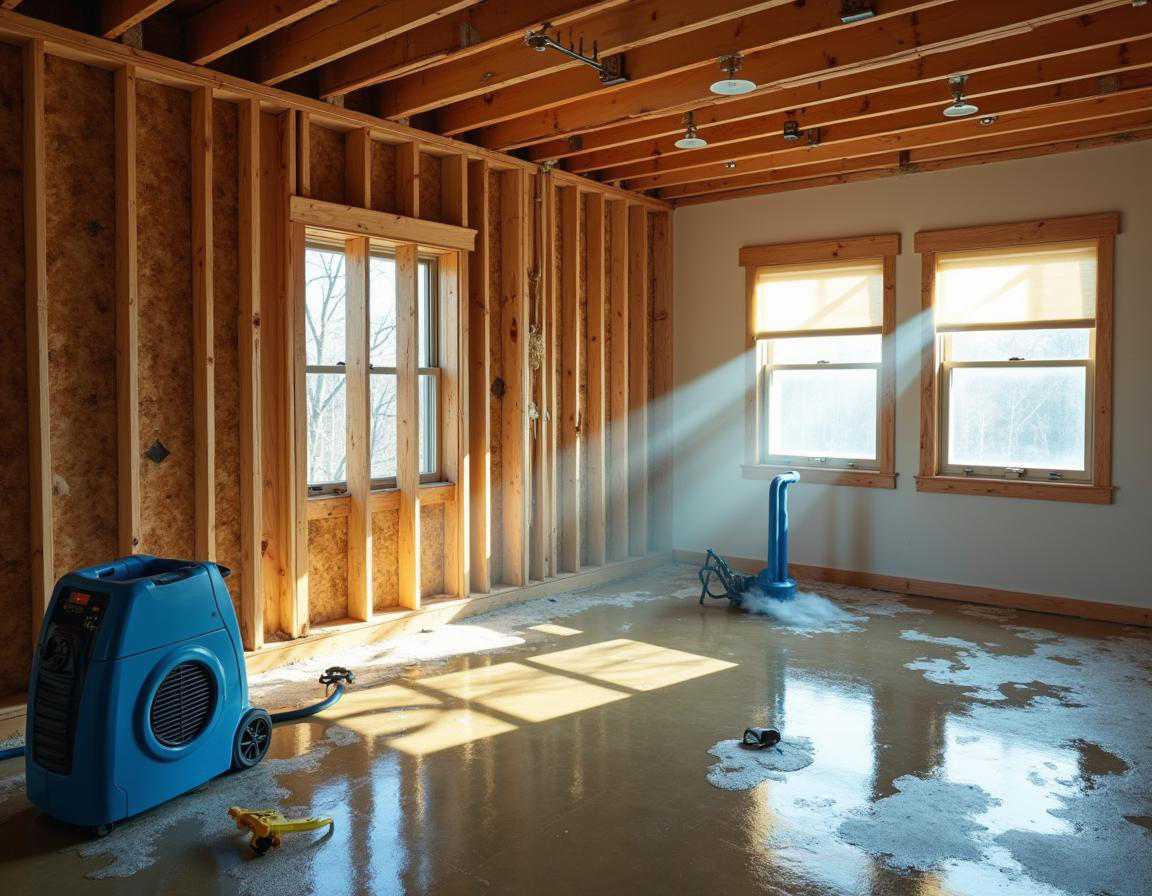
Monitor High HumidityLevels in Your Home
Monitoring high humiditylevels in the home is essential for preventing waterdamage. Using a dehumidifiercan effectively control moisture, reducing the riskof moldgrowth and structural issues. Communitymembers often rely on professional water restorationservicesto address persistent humidityproblems.
Excess moisturecan disrupt water supplysystems and create environments where viruses thrive. By regularly monitoring humiditylevels, homeowners can implement necessary measures to maintain a healthy indoor climate. Accessing local water restorationservicesensures expert guidance and effective solutions for managing humidity-related issues.
Look for Signs of Previous WaterDamagein Walls
Recognizing signs of previous waterdamagein walls involves looking for discoloration, peeling paint, or warped surfaces, all of which indicate past liquidintrusion. Conducting a detailed inspectionusing moisturemeters can help assess the extent of the damage and determine if flood damage restorationis necessary to restorethe integrity of the structure.
Persistent dampness may require the use of a vacuumto effectively remove residual moistureand prevent moldgrowth. Additionally, if the waterdamageresulted from firefighting efforts, it is crucial to address both liquidand any residual fire-related issues to ensure comprehensive restorationand maintain the building’s safety.
Understand the Risks of Delayed Water Removal Actions
Postponing water removalcan result in severe moldgrowth and compromise the functionality of air conditioningsystems, escalating the need for professional water damage restoration near me. During heavy rain, swift action by emergency serviceproviders is crucial to prevent lasting structural damage and maintain a healthy living environment.
Delays in addressing waterissues may lead to costly repairs and increased risks of electrical hazards. Utilizing bleachwithout proper guidance can be ineffective and potentially harmful, highlighting the importance of prompt assistance from experts to ensure thorough and safe restoration.
Act Promptly to Remove Excess Waterand Moisture
Acting quickly to remove excess waterand moistureis crucial in managing waterdamageeffectively. Utilizing wet vacuums extracts standing water, while fans and dehumidifiers reduce floorhumidity. Opening windows enhances air circulation, and removing rugs and carpets aids in carpet cleaning. Safely disposing of absorbent materials and monitoring moisturewith a hygrometer ensures thorough drying.
Use Wet Vacuums to Extract Standing WaterEfficiently
Using a high-quality vacuumcleaneris essential for efficiently removing standing waterduring the initial stages of waterdamage. By promptly deploying wet vacuums, homeowners can minimize the extent of moistureretention, reducing the riskof moldgrowth and structural deterioration.
In cases where wateraccumulation is extensive, seeking assistance from damage restoration servicesensures thorough extraction and safe dryingof affected areas. Additionally, attentionto details such as salvaging damp clothingand coordinating with plumberscan prevent further complications and expedite the recovery process.
Utilize Fans and Dehumidifiers for Effective Drying
Deploying fans and dehumidifiers is essential for dryingareas like basements and bathrooms after waterintrusion. These devices help lower moisturelevels, reducing the riskof moldand preserving household items such as bathtubs and furniture. Positioning fans to circulate air efficiently and placing dehumidifiers in key locations ensures comprehensive moistureremoval.
After a flood, determining what to do after a floodinvolves swiftly using fans and dehumidifiers to address residual moisture. This approach not only aids in restoring the home but also supports insuranceprocesses by documenting efforts to minimize damage. Regularly monitoring humiditywith these tools complements the functionality of pumps and other watermanagement systems, ensuring a thorough recovery from basement water damage.
Open Windows for Air Circulation and Freshness
After a flash floodor severe weatherevent, opening windows becomes essential for effective watermitigation. Proper air circulation accelerates the dryingprocess, helping to prevent moldgrowth and reduce structural damage. This simple action supports overall waterdamage mitigationefforts by creating a healthier indoor environment.
Engaging a reputable water restorationcompanycan provide guidance on optimizing window openings to enhance ventilation.
Experts advise keeping windows open until moisturelevels are fully controlled, ensuring thorough dryingand fresh air circulation. This strategic approach not only facilitates efficient waterdamage mitigationbut also safeguards the integrity of the property.
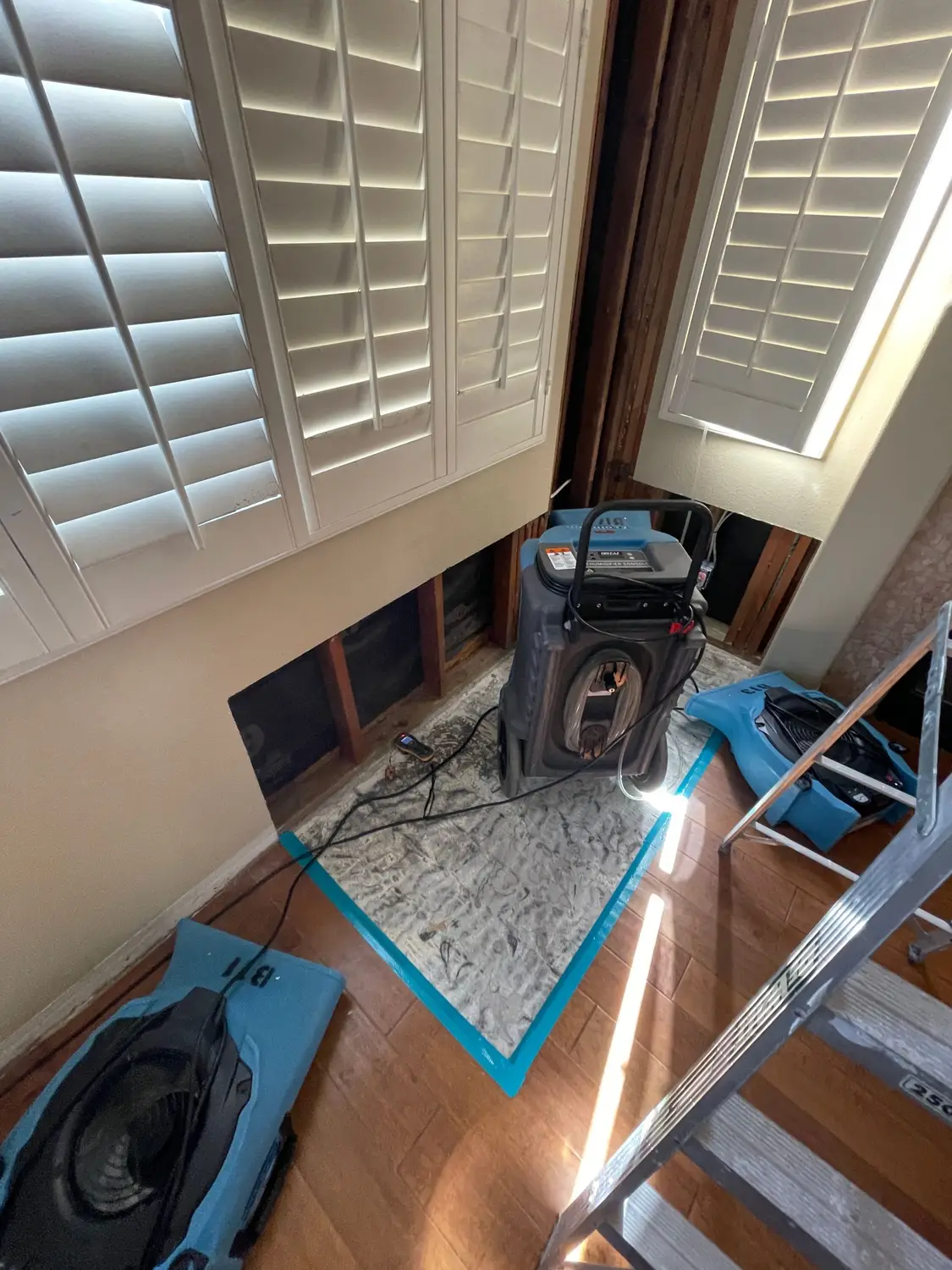
Remove Rugs and Carpets for Cleaning and Drying
Removing rugs and carpets from floodedareas is essential to prevent lingering odorand molddevelopment. By swiftly taking out these materials, customers can facilitate the dryingprocess and reduce the riskof structural damage caused by excessive moisture.
In cases where waterdamagefollows fireincidents, addressing both smoke damageand moistureis crucial. Professional restoration serviceshelp customers thoroughly clean and dry carpets, ensuring that residual pollutants do not compromise indoor air quality.
Dispose of Absorbent Materials Safely
Removing saturated materials such as carpets, drywall, and ceilingpanels is essential to prevent molddevelopment after waterdamage. Disposing of these absorbent items promptly ensures that disinfectants can effectively cleanse the area, maintaining a safe and dry environment.
In firedamage restoration, disposing of water-damaged ceilingmaterials and carpets requires careful handling to avoid contamination. Utilizing proper disposal methods and disinfectants guarantees that all residues are eliminated, supporting the property‘s full restoration.
Monitor MoistureLevels With a Hygrometer
Using a hygrometer enables homeowners to continuously monitor moisturelevels, which is essential for early detection of plumbingissues or emergency waterleaks. By keeping track of humidity, potential problems can be identified before they escalate, allowing for timely damage repairand minimizing the need for extensive damage restoration.
Regularly assessing moisturewith a hygrometer also protects painted surfaces from deterioration caused by excessive humidity. This proactive measure ensures that any signs of waterintrusion are addressed promptly, maintaining the home’s appearance and preventing costly restorationefforts in the future.
Assess the Extent of Damage for a Comprehensive Plan
Document damage with photos for insuranceclaims and identify affected areas and materials. Assess structural impacts and safety concerns, such as mildewand electrical issues. Report damages to authorities and insurers.
Seek professional assessments when needed and develop a repair plan based on findings. This ensures effective management of floodor waterleakincidents with a waterdamage company’s support.
Document the Damage With Photos for InsuranceClaims
Capturing detailed photographs of waterdamageis crucial for insuranceclaims, as it provides clear evidence of the affected areas and the severity of the situation. Homeowners should document damage to vital components such as plumbingfixtures, including toilets, and upholstered furniture, ensuring that each affected item is visibly recorded to support their restorationrequests.
Including close-up images of structural elements and appliances like water-damaged washing machines can expedite the insuranceprocess by illustrating the extent of necessary repairs. Engaging a professional plumberto verify hidden leaks and photographing their findings further strengthens the claim, facilitating a smoother and more accurate restorationprocess.
Determine Affected Areas and Materials
Assessing impacted areas and materials is crucial for effective waterdamage remediation. Restorationcompanies like Servproexcel in identifying all impacted zones, ensuring that no hidden damage goes unnoticed. Their commitment to excellent customerservicehelps homeowners navigate the restorationprocess smoothly, providing tailored solutions that address specific needs.
In cases where smoke damageaccompanies waterintrusion, a comprehensive evaluation becomes even more vital. Professional restorationcompanies are equipped to handle the complexities of both waterand smoke damage, ensuring that every compromised material is properly treated. This dual expertise guarantees a thorough restoration, restoring the property’s integrity and the homeowner’s peace of mind.
Evaluate Structural Impacts and Safety Concerns
Assessing structural impacts is essential to maintain the safety and stability of a home after waterdamageoccurs. Waterdamage expertscan identify compromised areas, such as weakened foundations or damaged frameworks, ensuring that repairs address all critical issues. Proper evaluation not only safeguards the healthof the occupants by preventing hazards but also plays a crucial role in optimizing home insuranceclaims for comprehensive restoration.
Addressing safety concerns promptly involves checking the functionality of backupsystems like sumppumps to prevent future watersurges. Ensuring these systems are operational can mitigate the riskof recurring damage and protect the property‘s integrity. Engaging with waterdamage expertsprovides homeowners with the expertise needed to manage these risks effectively, promoting a healthier living environment and reducing potential financial burdens.
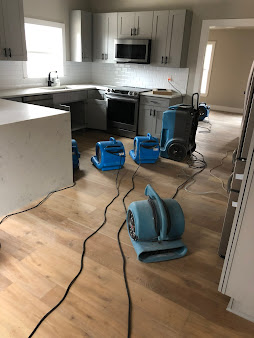
Report Damages to Relevant Authorities and Insurers
When dealing with waterdamage, promptly reporting the incident to relevant authorities and insurers is crucial for initiating waterdamage repair. Detailed documentation, including photos of the affected areas and information about the sump pumpsystem, supports restorationwaterdamageclaims and expedites the insuranceprocess.
Contacting insuranceproviders immediately after experiencing waterdamagefacilitates effective waterdamage cleanupand ensures coverage for necessary restoration services. Providing accurate and comprehensive reports to insurers helps homeowners receive the assistance they need to restoretheir propertyefficiently and minimize financial burdens.
Seek Professional Assessments When Necessary
Engaging professionals for waterdamageassessments minimizes the riskof overlooking hidden dangers, such as harmful pathogens that can thrive in damp environments. Experts utilize specialized equipment to detect and address issues that may not be apparent, ensuring a thorough evaluation and safe remediation process.
In cases of commercial water damage, professional emergency managementteams are essential for efficient decontaminationand restorationefforts. Their expertise ensures that business operations can resume promptly while maintaining a safe and healthy environment for employees and customers.
Create a Repair Plan Based on Your Findings
After identifying areas affected by flooddamage, it’s essential to develop a repair plan that addresses all critical issues, including potential sewagebackups and damaged walls. Assessing whether certain structures require demolitionensures that repairs are thorough and prevent future complications. Additionally, evaluating appliances like washing machines for damage helps determine necessary replacements or repairs, minimizing the riskof recurrent flooddamage.
Collaborating with experienced restorationprofessionals can streamline the repair process, especially when dealing with complex issues such as sewagecontaminationor extensive walldamage. By incorporating expert insights, the repair plan can prioritize tasks effectively, ensuring that all aspects of the flooddamageare addressed promptly and efficiently. This comprehensive approach not only restores the property’s integrity but also safeguards against long-term structural problems.
Implement Effective Mold Prevention Techniques
After a stormcauses waterdamage, implementing effective moldprevention techniques is crucial for healthand property. Using mold-resistant solutions to clean affected areas, ensuring proper ventilation, and maintaining low humiditywith dehumidifiers are essential steps. Regular inspections for moldgrowth, educating family members on contaminationrisks, and safely disposing of damaged materials are key practices supported by restorationcompanies in the area during emergencies.
Clean Affected Areas With Mold-Resistant Solutions
During a water emergency, utilizing mold-resistant cleaning solutions is vital to prevent the proliferation of harmful fungi. Nationalguidelines from organizations like the American Red Crossrecommend specific products that effectively eliminate moistureand inhibit moldgrowth, ensuring the affected areas are thoroughly sanitized.
After identifying waterdamagenear electrical systems, it is essential to consult a certified electricianbefore commencing mold-resistant cleaning. Professional electricians can assess potential hazards caused by waterexposure to stormdrains and electrical circuits, ensuring that cleanup efforts are conducted safely and efficiently.
Ensure Proper Ventilation in Key Areas
Ensuring proper ventilation in key areas, such as basements and rooms with exposed pipes, is vital to prevent moldand bacteriagrowth after waterdamage. Effective airflow helps reduce moisturelevels, making the environment less conducive to harmful organisms. Regularly opening windows and using exhaust fans can significantly enhance ventilation, promoting a dry and healthy indoor space.
Engaging a professional technicianto assess and optimize ventilation systems ensures that areas prone to moisture, like basements, receive adequate air circulation. Technicians can identify hidden moisturesources and recommend solutions tailored to each space, effectively minimizing the riskof molddevelopment. Their expertise guarantees that ventilation strategies are implemented correctly, safeguarding the propertyagainst long-term water-related issues.
Maintain Low HumidityLevels Using Dehumidifiers
Using dehumidifiers is a key strategy in maintaining low humiditylevels, which is critical for moldprevention following waterdamage. These machines work by extracting excess moisturefrom the air, thereby creating a dry environment that inhibits moldspores from thriving. Consistent operation of dehumidifiers helps sustain optimal indoor air quality and preserves the structural integrity of the property.
Experts advise positioning dehumidifiers in areas most affected by waterdamage, such as basements and bathrooms, to maximize their effectiveness. Regularly monitoring humiditywith devices like hygrometers can guide homeowners in adjusting dehumidifiersettings for best results. Taking proactive measures with dehumidifiers not only combats moldgrowth but also accelerates the overall dryingprocess, ensuring a swift and thorough recovery from water-related incidents.
Inspect Areas Regularly for Signs of MoldGrowth
Regular inspections are vital in detecting early signs of moldgrowth after waterdamage. Homeowners should focus on high-riskareas such as basements, bathrooms, and areas with poor ventilation. By consistently monitoring these spaces, potential moldissues can be identified and addressed promptly.
Common indicators of moldinclude visible discoloration, musty odors, and persistent dampness in walls or ceilings. Utilizing tools like moisturemeters can enhance the accuracy of inspections, ensuring that hidden moldis not overlooked. Taking immediate action upon discovering moldsigns helps maintain a healthy living environment and prevents extensive propertydamage.
Educate Family Members on MoldRisks
Educating family members about the dangers of moldexposure is essential in maintaining a safe home environment after waterdamage. Understanding the healthrisks, such as respiratory issues and allergies, empowers everyone to take proactive steps in preventing moldgrowth.
Providing clear information on proper ventilation and regular inspections helps family members contribute to effective moldprevention. This collective awareness ensures that potential moldissues are addressed promptly, safeguarding the well-being of all household members.
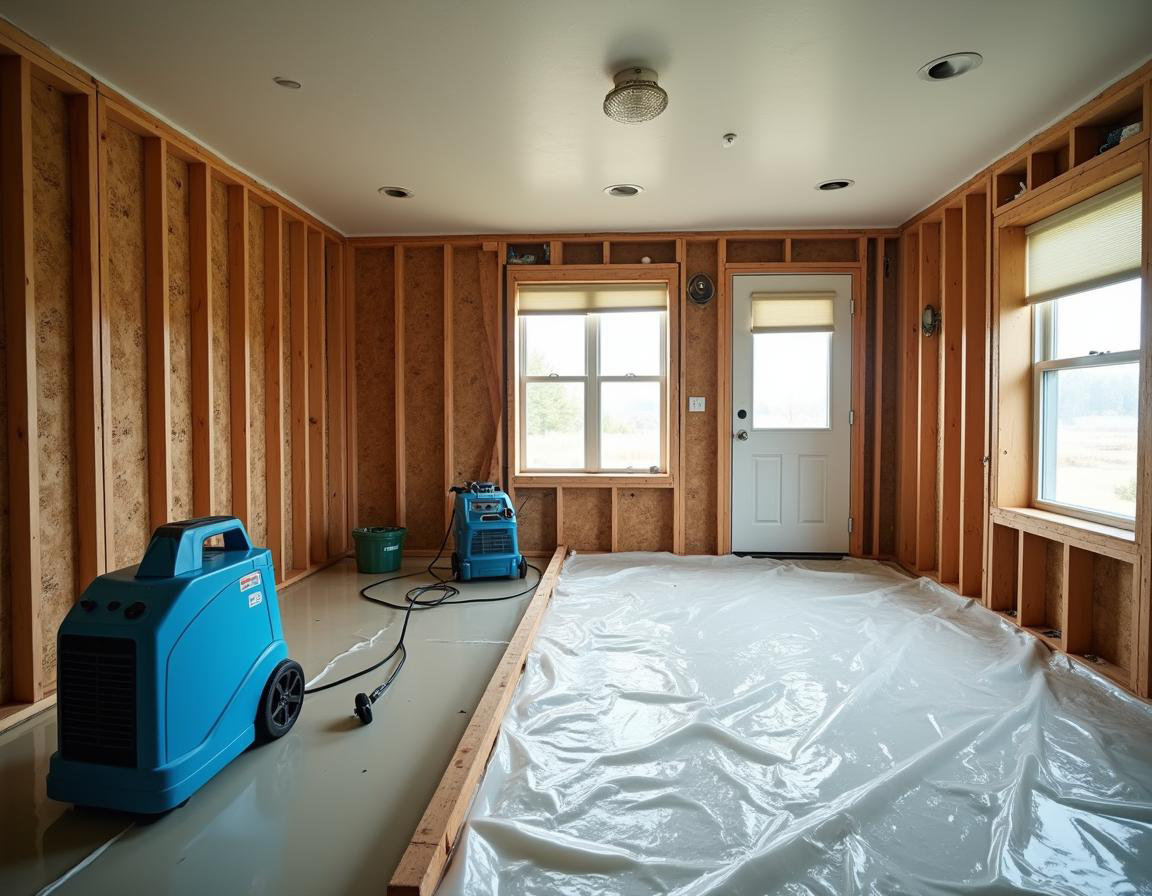
Dispose of Damaged Materials to Minimize Risks
Swiftly removing water-damaged items such as insulation, drywall, and upholsteryis critical to prevent moldproliferation and maintain a healthy living environment. Moldspores thrive in damp conditions, and leaving affected materials in place can lead to extensive contaminationand long-term structural issues.
Professionals recommend using appropriate protective gear and following local disposal regulations to safely eliminate damaged materials. By ensuring proper disposal, homeowners can effectively minimize healthrisks and support the overall moldprevention strategy, facilitating a more efficient restorationprocess.
Repair and Restorethe Affected Areas Thoughtfully
Repairing water-damaged areas involves removing and replacing damaged materials, working with professionals for structural repairs, and updating spaces with new paintand finishes. It also requires addressing electrical issues caused by waterexposure, reinstalling fixtures and appliances, and scheduling follow-up inspections for safety.
Remove and Replace Damaged Building Materials
Removing damaged building materials is a critical step in mitigating the effects of waterdamage. By promptly eliminating compromised structures such as drywall, insulation, and flooring, professionals can prevent moldgrowth and further deterioration of the property’s framework. This proactive approach ensures a safer environment and lays the groundwork for effective restoration.
Once the affected materials are removed, replacing them with high-quality, moisture-resistant components is essential for restoring the home’s integrity. Utilizing durable materials not only enhances the structural stability but also helps safeguard against future water-related issues. Engaging experienced contractors ensures that the replacement process is thorough and meets all necessary safety and quality standards.
Work With Professionals for Structural Repairs
Engaging experts in waterdamage restorationensures that structural repairs are executed with precision and expertise. These professionals assess the full scope of damage, addressing issues such as weakened foundations and compromised frameworks to restorethe property‘s safety and stability.
By collaborating with seasoned restorationteams, homeowners can benefit from specialized knowledge and advanced techniques that expedite the repair process. This partnership not only safeguards the home’s integrity but also minimizes the riskof future water-related complications.
Freshen Up Spaces With New Paintand Finishes
After addressing structural repairs, applying new paintis essential to restorethe room’s appearance and protect surfaces from future moistureissues. Using high-quality, moisture-resistant paintcan seal walls effectively, preventing moldgrowth and further waterdamage. This step not only enhances the aesthetic appeal but also ensures the longevity of the surfaces, providing a fresh and clean environment.
Updating finishes, such as trim and molding, contributes to a cohesive and polished look in the restored space. Selecting durable materials that withstand humidityand temperature changes helps maintain the integrity of the finishes over time. By carefully choosing the right paints and finishes, homeowners can achieve a seamless restorationthat revitalizes their home while safeguarding against potential water-related problems.
Address Electrical Issues Caused by WaterExposure
Addressing electrical issues after waterexposure is critical for ensuring the safety and functionality of a home. Certified professionals thoroughly inspect all electrical components, including wiring, outlets, and circuit breakers, to identify and replace any that have been compromised by moisture.
Promptly repairing electrical systems minimizes the riskof electrical fires and system failures, safeguarding the propertyand its occupants. Engaging experienced electricians ensures that all repairs comply with safety standards, facilitating a secure and efficient restorationprocess.
Reinstall Fixtures and Appliances After Repairs
Once repairs are complete, experts ensure that all fixtures and appliances are reinstalled correctly to maintain functionality and safety. Technicians meticulously check electrical connections and plumbingsystems to prevent any lingering issues that might arise from previous waterdamage.
Professional reinstallation also involves testing each appliance to confirm they operate efficiently and without defects. This careful approach not only restores the home’s conveniences but also provides homeowners with peace of mind, knowing that their fixtures and appliances are secure and reliable after the restorationprocess.
Schedule Follow-Up Inspections for Safety
After completing initial repairs, scheduling follow-up inspections ensures that all waterdamagehas been fully addressed and that no hidden issues remain. These inspections help verify the effectiveness of the restorationefforts and confirm that structural integrity and safety standards are maintained.
Regular assessments by certified professionals can identify potential problems early, such as residual moistureor weakened structures, allowing for timely interventions. By prioritizing follow-up inspections, homeowners can safeguard their propertyagainst future complications and ensure a secure living environment.
Learn From the Experience to Prevent Future Incidents
Reviewing home maintenance routines and investing in waterdetection systems help prevent future waterdamage. Preparing an emergencyresponse plan, educating family members, collaborating with neighbors, and staying informed on local weather and floodriskalerts further strengthen preparedness against water-related incidents.
Review and Improve Home Maintenance Routines
Regularly inspecting and maintaining key areas of the home, such as plumbingsystems, roofs, and windows, can significantly reduce the riskof future waterdamage. By addressing minor issues like leaks or worn seals promptly, homeowners can prevent more extensive and costly repairs down the line.
Implementing a consistent home maintenance schedule ensures that potential waterhazards are identified early and managed effectively. Routine tasks, such as cleaning gutters and checking appliance hoses, not only enhance the property‘s resilience but also contribute to a safer and more secure living environment.
Invest in WaterDetection Systems for Early Alerts
Investing in waterdetection systems equips homeowners with the tools to identify leaks and moistureissues before they develop into severe problems. These systems utilize advanced sensors placed in areas prone to wateraccumulation, such as basements, bathrooms, and near appliances, to continuously monitor for any signs of waterpresence. By receiving early alerts, homeowners can take swift action to address leaks, thereby preventing extensive damage and minimizing repair costs.
Modern waterdetection systems often integrate seamlessly with smart home technology, providing real-time notifications through smartphones or other connected devices. This immediate communicationensures that any detected waterissues are addressed promptly, even when homeowners are away from their properties. By leveraging these early alerts, residents can maintain a safer and more secure living environment, effectively reducing the risks associated with hidden waterdamageand enhancing overall propertyprotection.
Prepare an EmergencyResponse Plan for WaterEvents
Developing a comprehensive emergencyresponse plan for waterevents equips homeowners with clear actions to take during unexpected flooding or leaks. By outlining specific roles and responsibilities, the plan ensures that each family member knows how to respond effectively, minimizing confusion and reducing potential damage.
Including essential resources such as emergencycontact numbers, important documents storage, and necessary equipment in the response plan enhances preparedness. Regularly reviewing and updating the plan based on experiences helps maintain its effectiveness, ensuring that the household remains resilient against future water-related incidents.
Educate Family on Quick WaterDamageResponse Steps
Training family members on immediate waterdamageresponse steps ensures a coordinated and swift reaction during emergencies. By knowing how to shut off main watervalves and safely evacuate affected areas, households can minimize damage and enhance personal safety.
Regularly practicing emergencydrills helps reinforce these response steps, making the process second nature during actual incidents. Clear communicationplans and designated roles enable each family member to act efficiently, reducing confusion and preventing potential hazards.
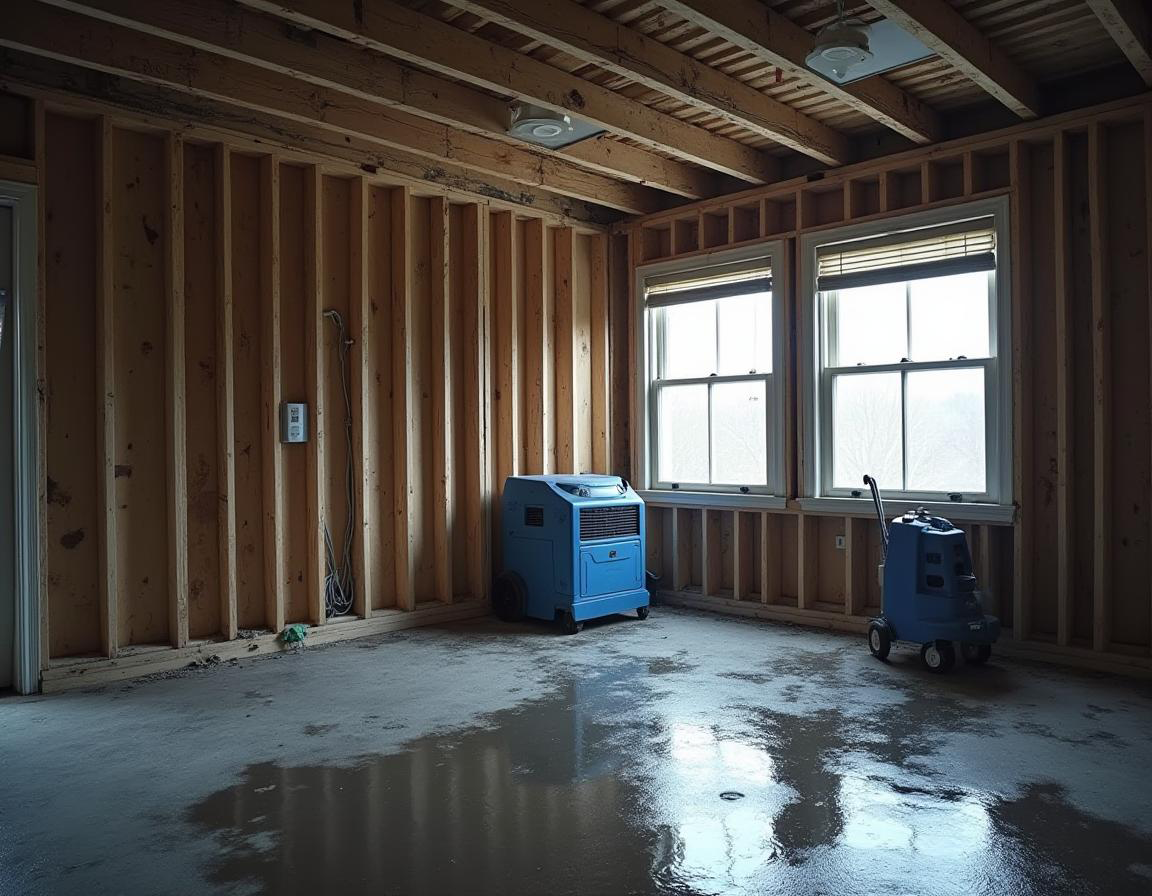
Stay Informed on Local Weather and FloodRiskAlerts
Keeping abreast of local weather and floodriskalerts is essential for homeowners aiming to mitigate potential waterdamage. By regularly monitoring updates from trusted meteorological sources and subscribing to alert services, individuals can receive timely notifications about impending storms or rising waterlevels. This proactive approach allows for early preparation, ensuring that necessary measures are taken to protect propertyand belongings before severe weatherstrikes.
Utilizing technology such as smartphone apps and automated alert systems can significantly enhance awareness of floodrisks in the area. These tools provide real-time information and actionable advice, enabling residents to respond swiftly to changing conditions. By staying informed, homeowners can implement immediate protective actions, such as securing outdoor items, reinforcing barriers, and evacuating if necessary, thereby reducing the likelihood of extensive waterdamageand ensuring the safety of their households.
Conclusion
Addressing waterdamageswiftly helps prevent extensive propertyharm and costly repairs. Promptly removing excess waterand accurately identifying the damage source are crucial for effective restoration. Implementing moldprevention techniques and collaborating with professionals ensure a thorough and safe recovery process. By learning from each incident, homeowners can enhance their preparedness and protect their homes from future water-related issues.

